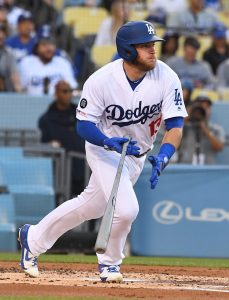Take one look at the Reds’ record – 43-48 – and it’s difficult to envision them as a team in position to buy prior to the July 31 trade deadline. On the other hand, the Reds certainly aren’t out of the playoff race, trailing the NL Central-leading Cubs by 5 1/2 games and sitting 3 1/2 back of a wild-card spot. Cincinnati is also in possession of the NL’s fifth-best run differential (plus-33) and a more-than-respectable 49-42 Pythagorean record.
Despite the team’s .473 winning percentage and last-place status in its division, is a sleeping giant about to awaken in Cincy? That seems to be the hope for president of baseball operations Dick Williams and general manager Nick Krall, who have suggested over the past week that the Reds are more inclined to buy than sell before the month is out. Whether they should is another matter. The Reds will have to leapfrog four teams and overcome a significant deficit to jump the Cubs if they’re going to win their division this year. It seems unrealistic. They obviously have a better chance to secure a wild-card berth, but that would be a daunting task with eight teams ahead of them for the NL’s fifth and final playoff position.
Fortunately for the Reds’ front office, the club’s schedule during the two weeks leading up to the deadline could provide more clarity on whether to buy, sell or stand pat. The Reds are amid a three-game set against the Cubs, whom they beat Monday, and then have series against four other teams with better records (the Cardinals, Brewers, Rockies and Pirates). Their slate’s similarly imposing after the deadline, with the Braves, Angels, Cubs, Nationals, Cardinals, Padres and Pirates set to serve as almost all of the Reds’ August opponents. Furthermore, the Marlins, Mariners and Mets are the only teams left on the Reds’ schedule through year’s end that aren’t legitimately in playoff contention at the moment.
The lack of tomato cans remaining on the Reds’ schedule may make selling over the next two weeks easier, as could the short-term pieces on their roster who could bring something back in trades. Outfielder Yasiel Puig – who started the year poorly but has been on a blistering pace since the beginning of June – as well as starters Tanner Roark and Anthony DeSclafani, second baseman Scooter Gennett, utilityman Derek Dietrich, shortstop Jose Iglesias, and relievers David Hernandez and Jared Hughes are all potential trade chips who will be free agents either after this season or the 2020 campaign. With the possible exception of Puig, no one in that group seems to stand much of receiving qualifying offer from the Reds when his team control expires. As such, it could behoove the Reds to move as many of them as possible right now for as much as teams are willing to pay.
On the flip side, no member of that bunch is a premium short-term piece (again, with the possible exception of Puig). Therefore, maybe you’re of the mind they should keep what they have, if not add to it, in lieu of selling vets for minimal returns and actually take a run at a playoff berth. For a franchise that’s staring at its sixth consecutive season without playoff baseball, perhaps there’s something to be said for making an against-the-odds effort to contend. The Reds tried to up their chances over the winter when they acquired Puig, Roark and others, though the win-loss results surely haven’t gone to the team’s liking thus far. Nevertheless, they don’t seem ready to say die as the 2019 deadline approaches.
(Poll link for app users)




